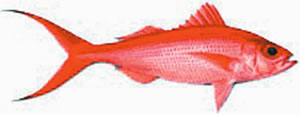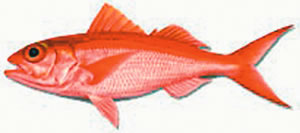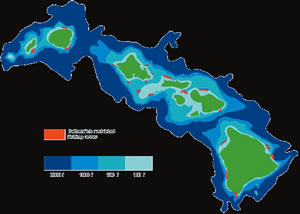A Deep Void With No Deep Seven

Wednesday - May 07, 2008
| Share
 Del.icio.us
Del.icio.us
|
Opakapaka and onaga lovers have circled Sept. 1 on their calendars. It’s the day the Deep Seven becomes fair game - again.
“We’re waiting patiently,” says local chef Chai Chaowasaree of Chai’s Island Bistro. “Our customers want to eat Hawaii’s bottom fish, but we know we have to wait.”
On April 14, the Department of Land and Natural Resources implemented a temporary closure for bottom-fishing in Hawaiian and federal waters. Fishing of any of the seven deep-water species - ehu, gindai, hapuupuu, kalekale, lehi, onaga and opakapaka - is prohibited until Aug. 31.
“We don’t have a choice,” says Chaowasaree.

|
Last year, the National Marine Fisheries Service determined that overfishing on bottom fish species was occurring around Hawaii. Although the current fishing season for the species officially ends May 1, the total allowable catch or TAC of 178,000 pounds was reached by mid-March.
DLNR chairperson Laura Thielen says the closure is critical to Hawaii’s fishery.
“Since 2005, bottom fish in the main Hawaiian Islands have been declared to be in a state of overfishing,” she says. “If the federal total allowable catch were to be exceeded, this could have adverse consequences on Hawaii’s fishery in the future.”

|
The Western Fishery Management Council recommended the new regulations after numerous meetings across the state. The goal of the meetings was to develop a management measure to end overfishing of bottom fish. The closure affects bottom-fishing within 200 miles around the main Hawaiian Islands and applies to all fishermen - commercial, recreational and subsistence.
Chaowasaree says the seasonal closure is having an impact on what’s being served around town.
“We don’t put onaga on the menu for several months,” he says. “We change the menu a little and serve more mahimahi, ahi and moi.”
Bottom fish on menus are either being imported or coming from the Northwestern Hawaiian Islands in the Papahanaumokuakea Marine National Monument. Many fish buyers already purchase imported bottom fish, although most local customers prefer Hawaiian grown.

|
“We still have onaga on the market, but it’s coming from Australia and New Zealand,” says Chaowasaree. “The freshness and texture are just not the same, especially if you want sashimi style. The meat is sometimes chewy.”
So what happens if you snag one of these snappers or groupers during the seasonal closure? Simple, you must throw it back into the water immediately, regardless of its condition. Most fishermen, fish buyers and chefs understand the need for regulations. “We understand. We have to do it because if we don’t do it now, we won’t have anything in the future,” says Chaowasaree. “It is important and we need it. This is about the future.”
Fortunately, this deep void is only temporary.
E-mail this story | Print this page | Comments (0) | Archive | RSS Comments (0) |
Most Recent Comment(s):













